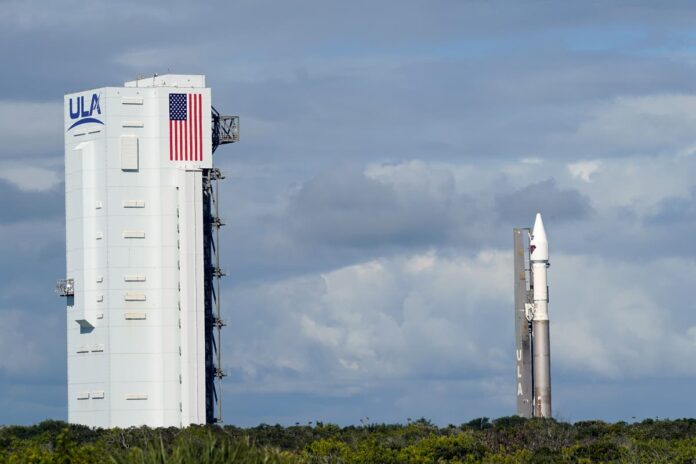
Nasa launched a unique asteroid mission this weekend to study two large accumulations of space rock around Jupiter that scientists believe are remnants of the primordial material that formed the outer planets of the solar system.
The mission, called Lucy, is set to explore a record-breaking number of asteroids over the next 12 years after being launched on Saturday morning from Cape Canaveral Air Force Station in Florida.
The spacecraft is scheduled to fly past an asteroid in the main belt of the solar system in April 2025 before flying past seven of Jupiter’s Trojan asteroids from August 2027.
Its path will return to Earth three times in support of gravity, making it the first spaceship to ever return from the outer solar system to near our planet.
The Trojan asteroids, named after characters from Greek mythology, orbit the sun in two swarms, with one group traveling in front of Jupiter and the other behind it.
Scientists hope that studying these asteroids up close will help us learn more about how the planets in our solar system were formed 4.5 billion years ago and why they landed in their current configuration.
“The Trojan asteroids are holdovers from the beginnings of our solar system, practically the fossils of planet formation,” said Harold Levison, principal researcher on the mission at the Southwest Research Institute in Boulder, Colorado, of NASA.
The US space agency also said that no other single mission in the history of space exploration was designed to visit so many different objects independently orbiting the sun.
Lucy, who takes her name from a petrified human ancestor whose skeleton gave a unique glimpse into human evolution, stands over 14 m from tip to tip – most of which are giant solar panels used to power the spacecraft.
All of its instruments and a two-meter-high antenna needed to communicate with Earth will be housed on the much smaller spacecraft.
The Lucy fossil, unearthed in Ethiopia in 1974, was named after the Beatles song “Lucy in the Sky with Diamonds”, which was played over and over again in the excavation team’s expedition camp.



